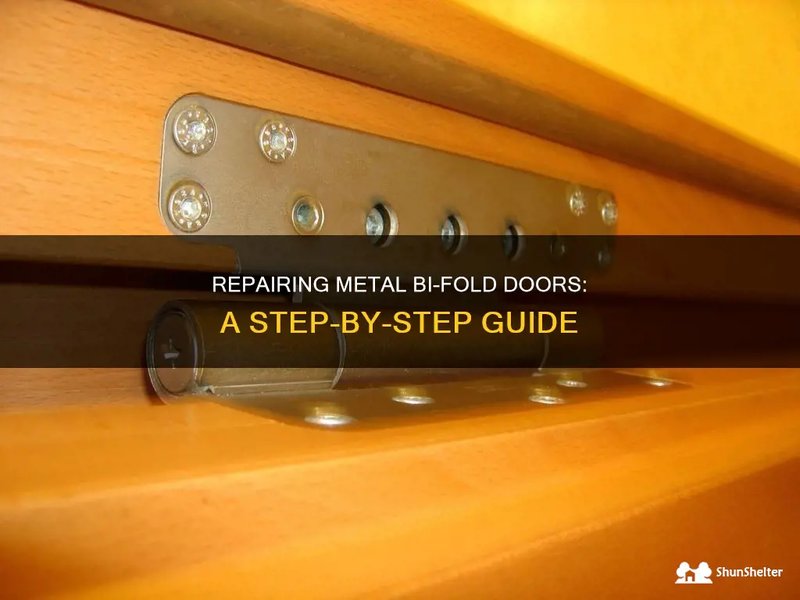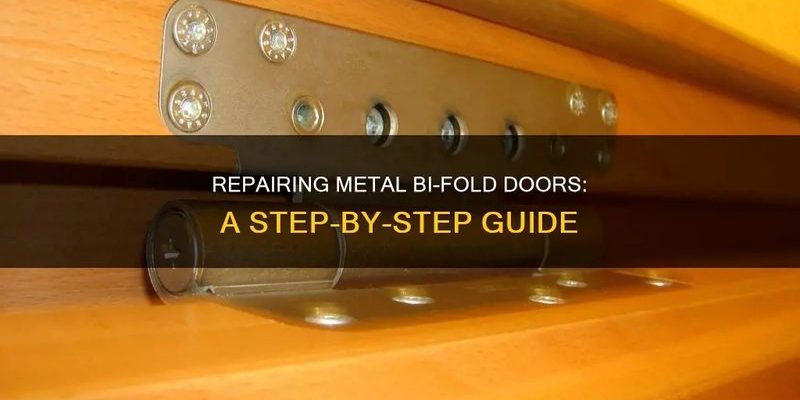
Imagine your bi-fold door as a well-loved book. Sometimes, the spine gets a little bent, or a page might tear. With a little care and some basic tools, you can get it back to its prime condition. Let’s dig into the common issues you might face with your bi-fold door panels and how to fix them.
Identifying the Problem: What’s Wrong with Your Bi-Fold Door?
Before you dive into repairs, you need to figure out what’s causing the trouble. Is it a misaligned panel, a sticky track, or perhaps a faulty hinge? Each of these issues can affect how your door functions and how well it closes.
First, take a close look at the door. Open and close it a few times while paying attention to any unusual noises or resistance. If it feels like it’s sticking or not aligning properly, the problem might be related to the hardware, like the hinges or the track itself. Once you identify what’s wrong, you can decide on the right tools and methods to fix it.
Another thing to consider is the wear and tear on the hardware. Over time, components can become rusty, bent, or loose. Inspect the hinges for rust or breakage. A quick inspection can save you time and hassle later on.
Tools You’ll Need for Small Repairs
Preparation is key when tackling repairs. Having the right tools at your fingertips can make a world of difference. Here’s a list of tools and materials you’ll likely need:
- Screwdriver: A common tool that’s essential for tightening or loosening screws.
- Lubricant: Silicone spray or a similar product can help smooth out sticky tracks.
- Replacement Hardware: If something is broken, having new hinges or screws is vital.
- Level: This handy tool ensures your door stays aligned.
- Measuring Tape: To measure the correct lengths for adjustments.
Having everything ready before you start means you won’t have to pause mid-repair to search for a tool. Honestly, that can be the most frustrating part of any DIY project!
Fixing Misaligned Bi-Fold Door Panels
Misaligned panels are one of the most common issues with bi-fold doors. If your panels aren’t lining up correctly, they might not close or open smoothly. Here’s how to address this problem:
1. Check the Hinges: Over time, hinges can become loose. Grab your screwdriver and check for any loose screws. Tighten them as needed. If the hinge is damaged, consider replacing it.
2. Adjust the Panels: If the door is still misaligned, you might need to adjust the panels themselves. Most bi-fold doors allow you to shift the panels slightly. Loosen the screws holding them in place and carefully reposition them before tightening the screws again.
3. Use a Level: After making adjustments, use a level to ensure the door is straight. If it’s not, repeat the process until everything looks good.
Taking these steps can help restore functionality to your bi-fold door and make it operate like new again.
Cleaning and Lubricating the Track
A sticky track can be a major headache for bi-fold door users. If your panels stick or hesitate when opening or closing, it’s time for a cleaning and lubrication session.
Start by inspecting the track for any debris, dust, or dirt buildup. You can use a small brush or a vacuum attachment to clean out any gunk that’s accumulated. It’s like giving your door a fresh start!
Once the track is clear, apply a quality lubricant. A silicone spray works wonders here. Spray along the track, and then gently move the door back and forth to spread the lubricant evenly. This will help reduce friction and improve movement. Remember, less is more when it comes to lubricant—too much can attract more dirt, which defeats the purpose.
Replacing Damaged Hardware
If you come across any broken or worn-out parts during your inspection, replacing them is crucial. Common items that may need replacement include:
– Hinges: If they show signs of rust or warping, swap them out to ensure smooth operation.
– Track Wheels: Worn wheels can cause sticking. Check them and replace if necessary.
– Screws and Bolts: These can rust or loosen over time. Keeping them in good condition is essential for the overall function of the door.
When replacing hardware, make sure to match the size and type. This is like finding the right puzzle piece; it has to fit perfectly to work harmoniously with the rest of the door system.
Final Touches: Testing Your Repairs
After making your repairs, it’s time to test everything. Open and close the door multiple times to get a feel for how it operates. Listen for any unusual noises and check for any sticking points.
If everything runs smoothly, congratulations! You’ve tackled your bi-fold door repair like a pro. If you notice any lingering issues, don’t hesitate to revisit the earlier steps or consult a professional for more complicated fixes.
Maintaining Your Bi-Fold Door
Once you’ve successfully repaired your bi-fold door, keep it in good condition with regular maintenance. Here are a few simple tips:
– Clean the Track Monthly: A quick cleaning can help prevent buildup and keep your door operating smoothly.
– Lubricate Twice a Year: A bit of lubricant goes a long way. Schedule it with your seasonal home maintenance routine.
– Inspect Regularly: Check for loose screws or rust. Catching problems early can save you time and hassle in the long run.
By staying proactive with maintenance, you’ll help ensure your bi-fold door remains a beautiful and functional part of your home for years to come.
In conclusion, repairing a damaged bi-fold door panel doesn’t have to be a daunting task. With some basic tools and a bit of patience, you can tackle small hardware-related repairs on your own. Remember, your home is a reflection of you, and keeping it in good shape is worth the effort. Happy repairing!
